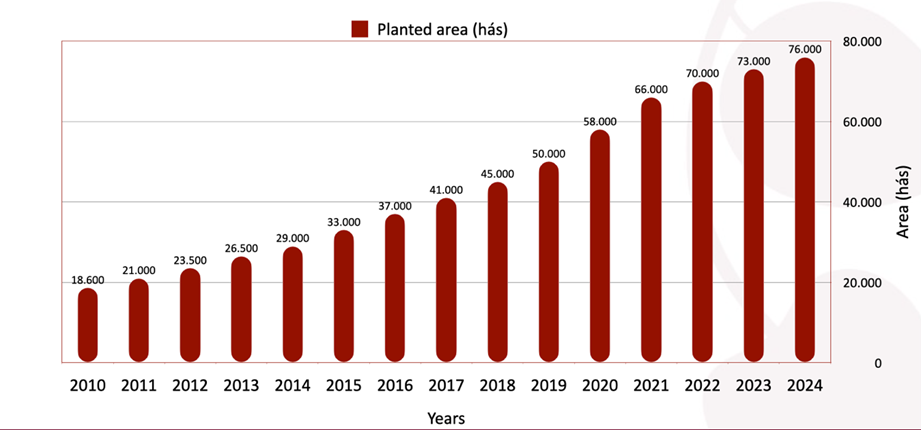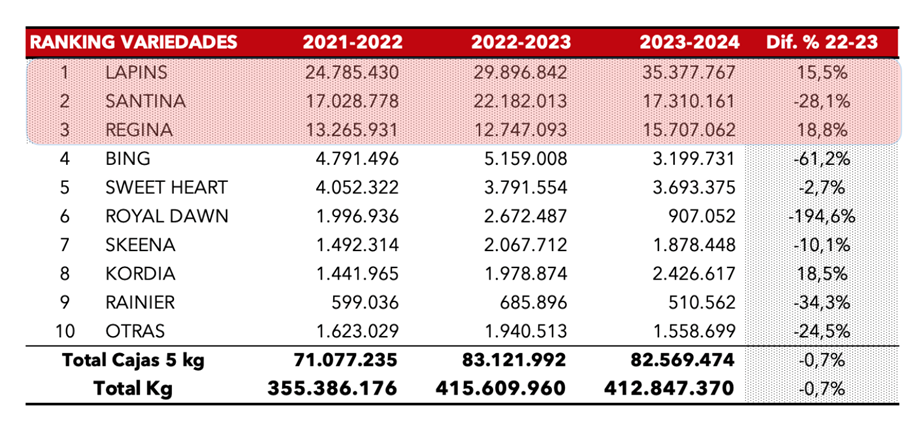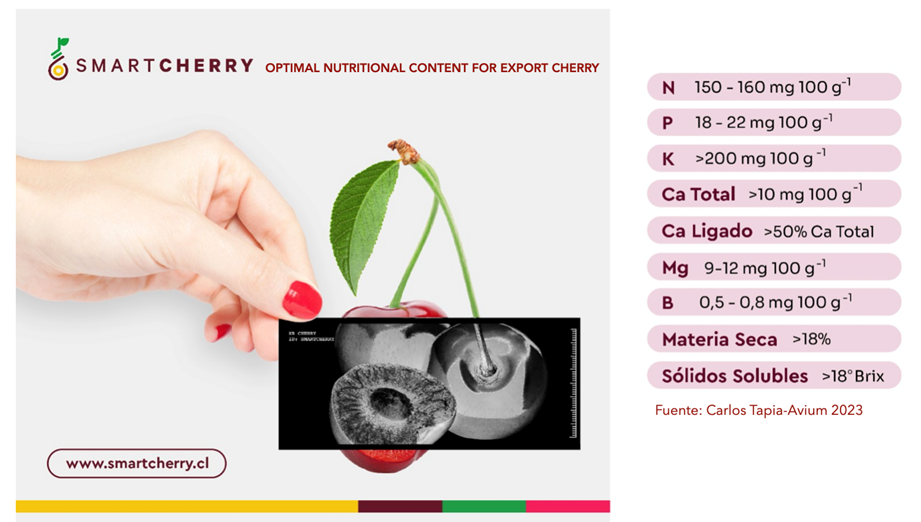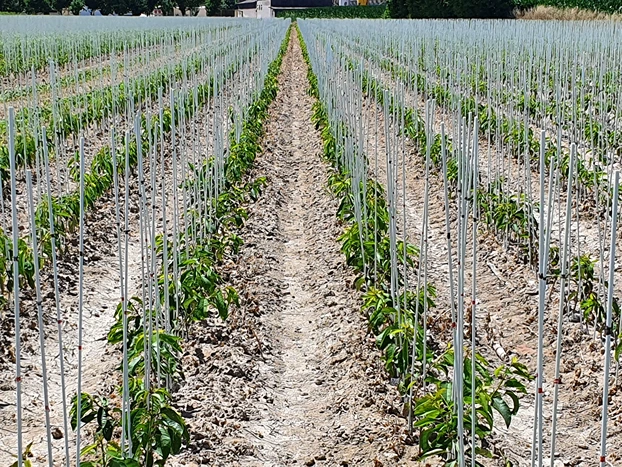Cherry Times is pleased to publish an extract of the reports presented at the International Congress "Which biosolutions for quality cherries?" at Macfrut 2024.
In the last decade, Chile has positioned itself among the most important cherry production and export countries in the world, with second and first place respectively according to the latest updates.
As the main supplier in the southern hemisphere, it has suffered a sustained evolution of its plantations and production in conjunction with market demand, mainly concentrated in the Far East, taking into account China as the largest customer of fresh Chilean cherry.
Today Chile has planted about 73 thousand hectares (Fig. 1), and it is considered that in 2024 about 3,500 hectares can be planted. The growth is projected to mean that in the coming years about 5,000 hectares could be planted per year, considering a near horizon of 100 thousand hectares planted before 2030. Image 1 - Evolution of the area planted with cherries in Chile. Source: Carlos J. Tapia 2024, Avium.
Image 1 - Evolution of the area planted with cherries in Chile. Source: Carlos J. Tapia 2024, Avium.
Although the productive area extends about 1,000 km throughout the country, 80% of the plantations are concentrated in two regions, the O'Higgins Region and the Maule Region mainly, which only cover about 300 km in length in the central zone. The projected growth undoubtedly largely comprises growth within these same regions.
Regarding the varietal offer, the "top 3" on the list are the Lapins, Santina and Regina cultivars (Fig. 2), varieties that have been developed depending on the climatic zone of each region. However, the growth in recent years has been concentrated mainly in Santina to cover the supply of some earlier areas. Some new varieties have been developed slowly until now considering the lack of experience in growing them.
 Image 2 - Ranking of varieties exported in the last three seasons in Chile. Source: ASOEX – Avium 2024.
Image 2 - Ranking of varieties exported in the last three seasons in Chile. Source: ASOEX – Avium 2024.
What has been the great support of Chile to maintain this growth and production? Without a doubt, the Chinese market's demand for high-quality fresh cherries is fundamental in this productive development. Last season, Chile exported 376 million kilos of fresh cherries to China, equivalent to 91% of total exports.
This requires special attention, as the journey of the fruit from the field to the final consumer is about 40 days on average, so the quality of the fruit in terms of nutritional content, quality and phytosanitary condition must be perfect. In this aspect, work has been carried out to establish the specific nutritional content of an export cherry, which is a permanent concern in the industry (Fig. 3). The above supports the fact that the postharvest industry has become the most technological and efficient worldwide.
 Image 3 - Nutritional content, dry matter and soluble solids for cherry exports in Chile. Source: Carlos J. Tapia. Avium-SmartCherry 2023.
Image 3 - Nutritional content, dry matter and soluble solids for cherry exports in Chile. Source: Carlos J. Tapia. Avium-SmartCherry 2023.
Specialists, technicians and especially producers have had technological evolution in the last decade, improving technical aspects such as the use of more efficient rootstocks, better developed conduction systems, increase in planting density, development of specific nutritional and phytosanitary plans for the species and even for each variety, etc., but with a special mention to the evolution of the producers' operation to carry out important tasks for the crop at specific times.
The permanent challenge is to maintain and improve the supply of cherries in the world, maintaining consistency in quality and condition, considering the sustained growth and future supply of cherries from Chile for the coming seasons.
Carlos José Tapia
SmartCherry
Cherry Times - All rights reserved















